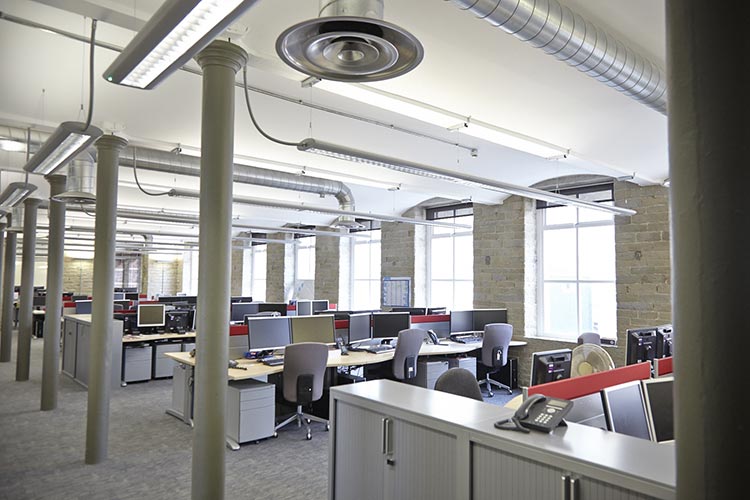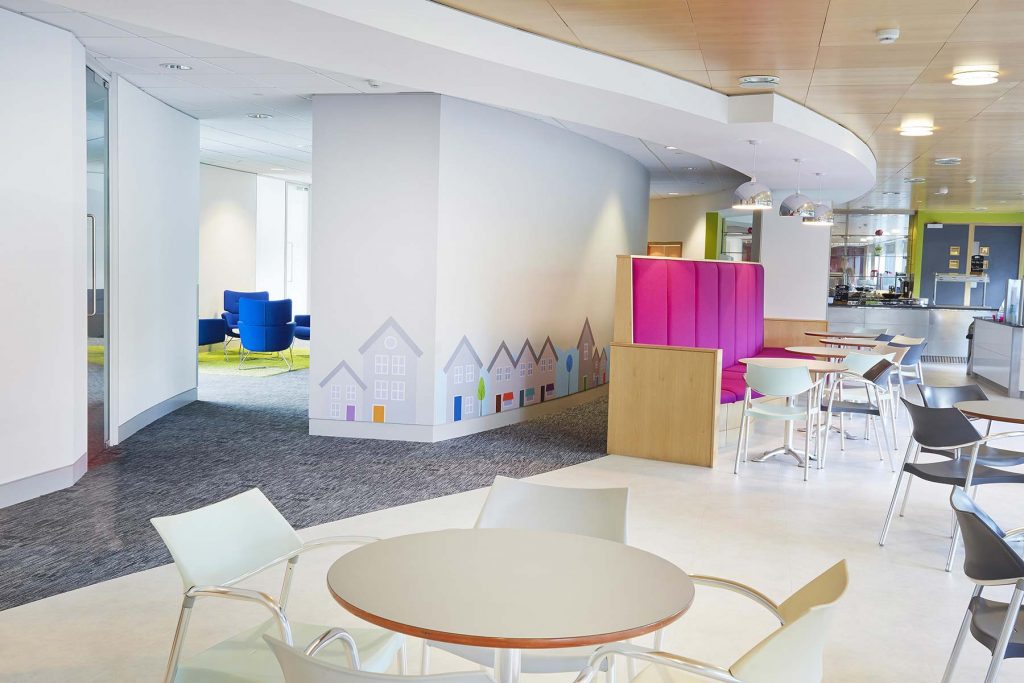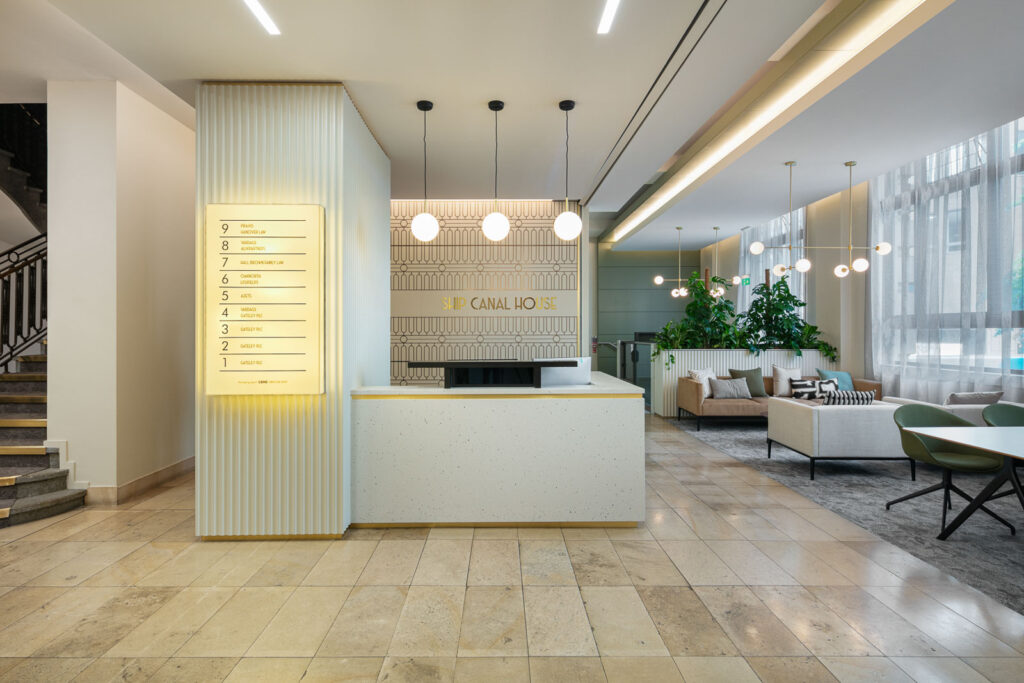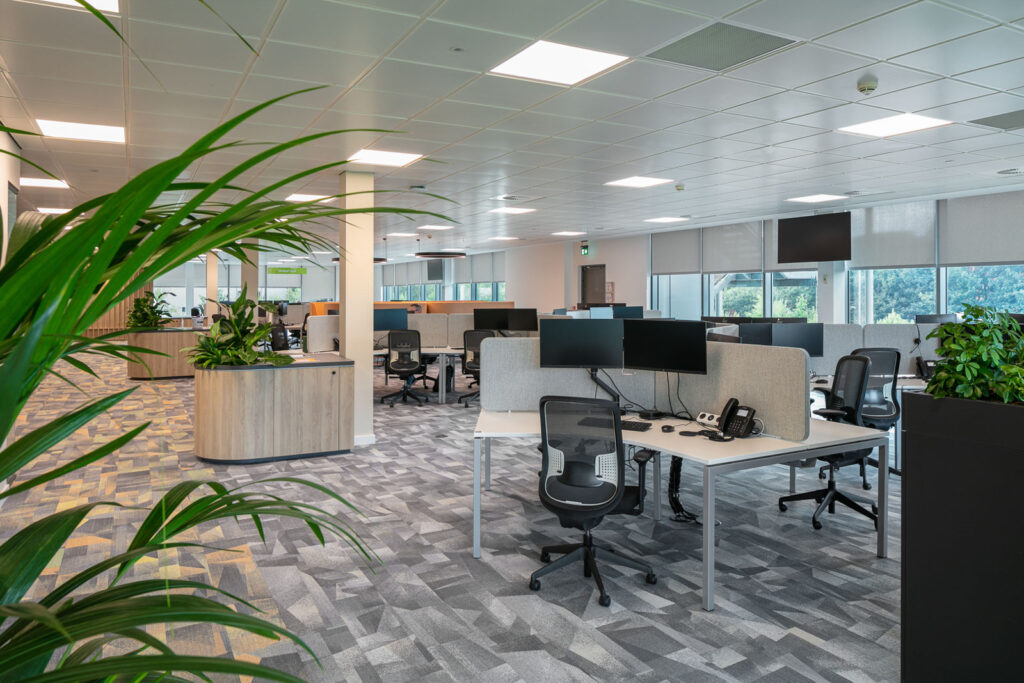Post-pandemic we have seen an increasing number of clients wishing to retain as much of their existing furniture (and in some cases, pre-existing fit-out) when considering their relocation to new space. Historically these decisions have been budget related, but in recent years we have a significant shift towards re-purposing, with environmental considerations becoming an increasingly significant factor in these decisions.
Much like the popularisation of recycled clothing websites, where it is now ‘cool’ to wear vintage, it has become more socially acceptable to re-purpose and recycle. This message started in the home but has now expanded to include commercial environments. The resurgence in popularity of the Ercol brand for example has seen the value of pieces from the 1960s increase exponentially in value, while the recent partnership with Orangebox has introduced their products to a completely new audience.
Our clients are actively looking to reduce their carbon footprint, and the potential to recycle or re-purpose their existing furniture has become an early part of their decision-making process.
But this is nothing new to us. Bluesky Design has a long history of working with clients to develop creative interior schemes which retain existing furniture. In 2005, on completion of our project for SSP in Halifax, one of the senior management team was overheard to say, ‘I didn’t know we had purchased new desking for the move’. They hadn’t, but their initial decision to purchase quality product (Steelcase in this instance) meant it was possible to clean and refurbish the tops, re-touch the paintwork and recover the screens. The desks were then relocated to the new office looking like new.

In 2008 this approach was taken further when Symphony Housing Group relocated from Salford Quays to their new home in Sale. The proposed site had been inherited from Astra Zenica, complete with furniture and partitions in-situ. Our challenge was to re-use not just the furniture but the fit-out as well! Read our Contour Homes case study.

Over the years countless clients have embraced this approach to varying degrees, repositioning partitions, or re-using storage, desking or meeting furniture as appropriate to their changing needs.
More recently we have seen this approach taken to the physical space within buildings. Earlier this year we completed a project for the Grade II listed Ship Canal House in Manchester. Here our client was keen to avoid stripping out the pre-existing scheme with the environmental landfill implications. Instead, the proposed reception scheme involved the re-decoration and overcladding of the previous outdated features and finishes (including the reception desk). New seating, lighting and loose furniture were carefully selected to enhance the new space, providing a welcome uplift in-keeping with the heritage of the building.

Our most recent project for Arval, completed in August 2024 saw the client re-purpose all their existing desking and seating, with other key items of furniture which were re-covered to suit the new scheme. Of course, as office design has moved on, new products have become available to support new ways of flexible working. Successful modern offices no longer comprise purely desks, private offices and meeting rooms. Now key ‘third space’ elements are introduced including quiet pods, seating booths, sit-stand surfaces and collaboration tables. These may be supplemented with acoustic panels and open shelving to break up the office space and enhance the re-purposed elements. Arval is our most successful example to date of the amalgamation of all these elements.

